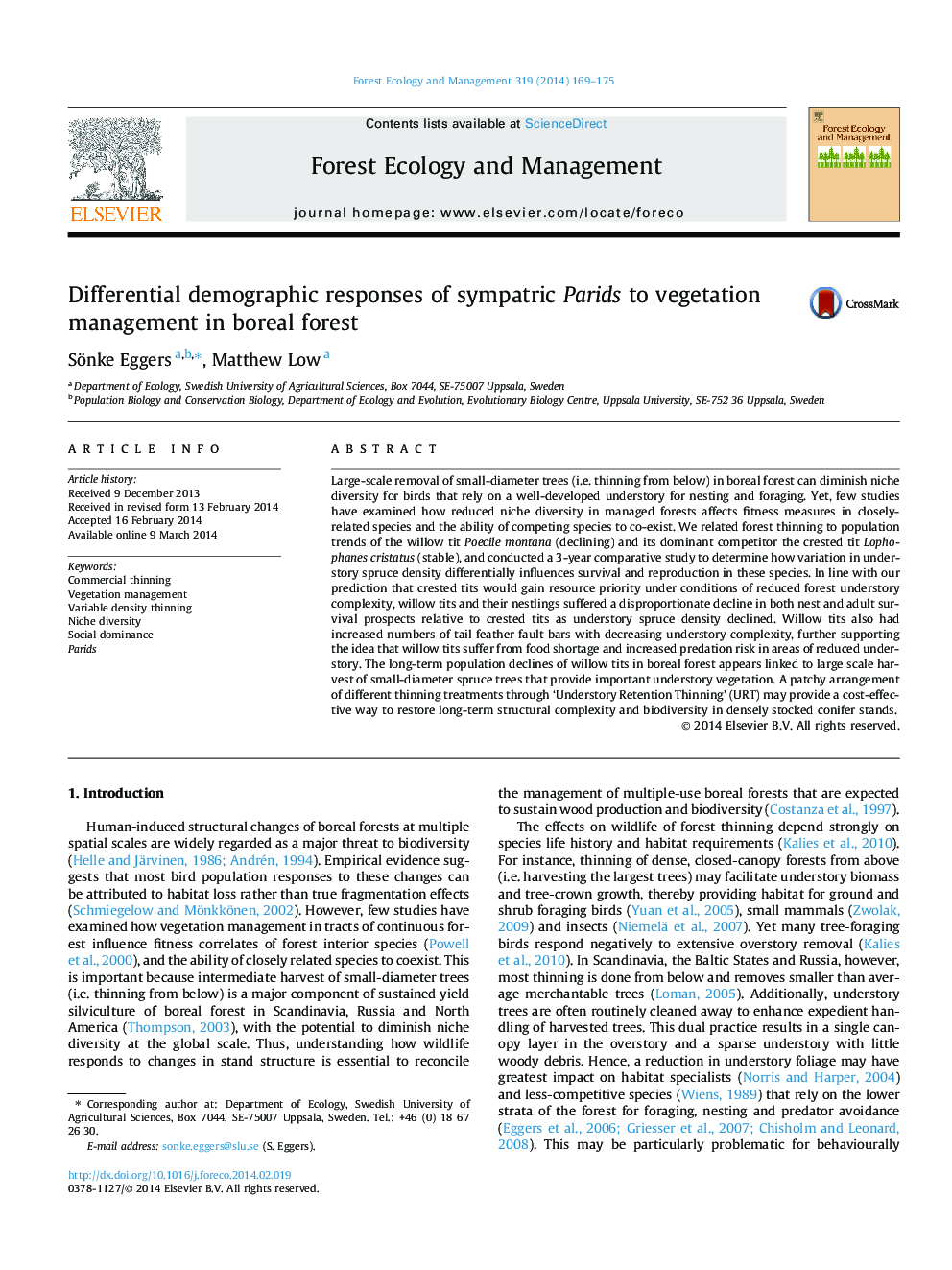| کد مقاله | کد نشریه | سال انتشار | مقاله انگلیسی | نسخه تمام متن |
|---|---|---|---|---|
| 86663 | 159202 | 2014 | 7 صفحه PDF | دانلود رایگان |

• We examine how reduced niche diversity in boreal forest affects fitness measures in closely-related species.
• Sympatric willow- and crested tits differ in their demographic responses to vegetation management.
• Willow tits suffer from higher mortality rates than crested tits in response to understory removal.
• Population declines of willow tits appear linked to large scale harvest of understory spruce trees.
• Variable ‘Understory Retention Thinning’ may restore structural complexity and biodiversity in conifer stands.
Large-scale removal of small-diameter trees (i.e. thinning from below) in boreal forest can diminish niche diversity for birds that rely on a well-developed understory for nesting and foraging. Yet, few studies have examined how reduced niche diversity in managed forests affects fitness measures in closely-related species and the ability of competing species to co-exist. We related forest thinning to population trends of the willow tit Poecile montana (declining) and its dominant competitor the crested tit Lophophanes cristatus (stable), and conducted a 3-year comparative study to determine how variation in understory spruce density differentially influences survival and reproduction in these species. In line with our prediction that crested tits would gain resource priority under conditions of reduced forest understory complexity, willow tits and their nestlings suffered a disproportionate decline in both nest and adult survival prospects relative to crested tits as understory spruce density declined. Willow tits also had increased numbers of tail feather fault bars with decreasing understory complexity, further supporting the idea that willow tits suffer from food shortage and increased predation risk in areas of reduced understory. The long-term population declines of willow tits in boreal forest appears linked to large scale harvest of small-diameter spruce trees that provide important understory vegetation. A patchy arrangement of different thinning treatments through ‘Understory Retention Thinning’ (URT) may provide a cost-effective way to restore long-term structural complexity and biodiversity in densely stocked conifer stands.
Journal: Forest Ecology and Management - Volume 319, 1 May 2014, Pages 169–175